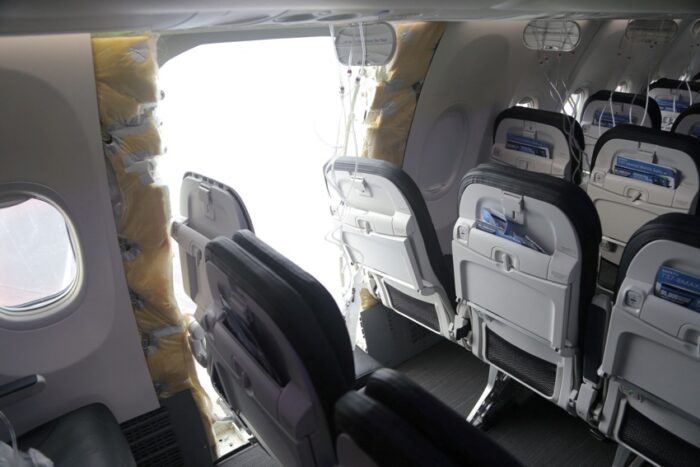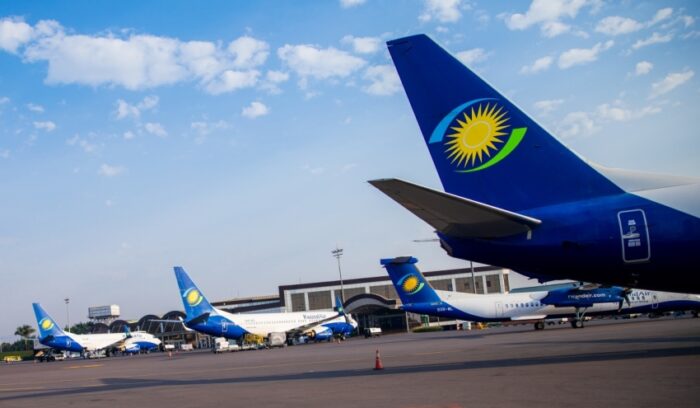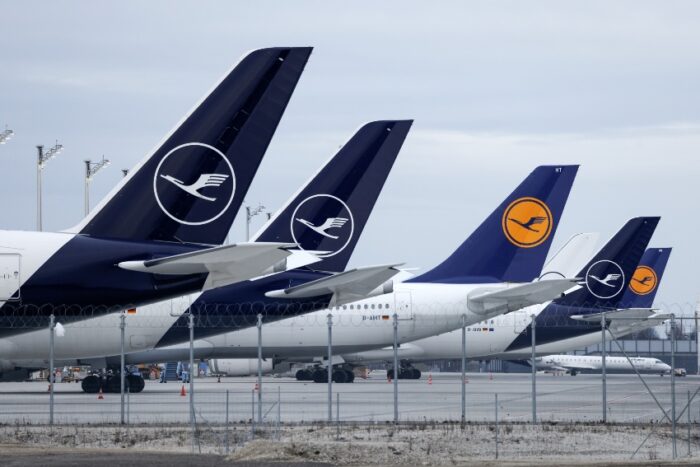Competitive challenges today push aircraft makers to ‘force’ technology on already reliable and dependent aircraft and that today is leading to lower reliability. The proven dependable and unbreakable 737NG didn’t need to be replaced with the 737MAX, and for practical logic, if the 737NG needed a step up, it should have been the Boeing 757. The logic of “If it ain’t broke don’t fix it” no longer seems to exist in aircraft and engine making, and the theory of New Design Platform is convoluted to the point of reaching dumbed down mans plaining. Mark D Martin of Martin Consulting shares his views on this vantage and critical topic affecting commercial aviation today for Aviation World readers.
Famed Indian Spiritualist Shri Chinmoy once said, “Do not blame the world. Find a Solution.” In aviation, the first step to finding a solution is admitting to the problem and Pratt & Whitney (PW) needs to get its act together with taking responsibility for its flawed PW1000G, 1100G and 1524G Geared Turbo Fan (“PW-GTF”), repeal or withdraw the product from the market; or replace it with an improved option, or even better, a whole new clean sheet design engine.
Air Tanzania, Air Senegal, Turkish Airlines, IndiGo, Air Asia, Air India, Batik Air, Spirit Airlines, Lufthansa, Jet Blue, Swiss Air, Air Baltic all join with reporting severe design flaws and poor metal quality with the PW-GTF engine and we’re reached a spot today that Airbus itself has made it clear that it would not be accepting anymore Pratt & Whitney Geared TurboFan Engines till PW comes up with a permanent solution.

Flawed Design with Engines Today
The problems with the PW-GTF engines are real, catastrophic, compromise safety; and near to fatal triggering full-blown emergency landings, teeth rattling vibration, corrosion, separation of fan blades during flight and premature removal of an engine for maintenance at one fourth of PW’s own defined removal time, in addition to metal shavings showing up in the engine oil, cracked metal casings and fractured metal alloys. So much so that the FAA and EASA in order to avert a major mishap or calamitous incident approved the use of mixed engines (something never done ever before in commercial aviation) while banning ETOPS flights (Flights over water that are more than 180 mins). The Indian DGCA in 2019 went a step ahead by grounding Pratt & Whitney GTF Engines in operations with all airlines under its purview.
One of its strangest anomalies noted with the PW-GTF (that I am sure a lot of you may have experienced) is a loud, shrill, sharp howling noise that shows up either when the aircraft is taxing to the runway to take off, or noted during landing. What resembles a reported ‘whale-song’ like sound morphs itself into an ear drum shattering loud noise measuring a staggering 12dB just short of landing.
For Airlines in India, it has been rough. IndiGo reported nearly five in-flight engine failures during the most critical flight phase, Climb, while shut down and insolvent GoAir reported several compressor stalls collocated with very high vibration, corrosion and engine damage. The PW-GTF problem has been so severe that even the Indian DGCA in 2019 ordered all the affected PW-GTF engines to be replaced, with a rigid deadline.

Pratt & Whitney Needs to Discontinue the PW-GTF Immediately
It’s time we defined this issue correctly. This isn’t a Lawyer-PR coined “Supply Chain” issue. Supply chain issues occur when a product is superbly reliable, robust, functional and in extreme high demand. PW-GTF issues at the moment plague a Lufthansa, indigo, Swiss Air and Air Baltic as much as it does a Go Air and its high time Pratt & Whitney got mature enough to take a firm step with discontinuing the PW-GTF Series engine for good and airlines in turn switch to another engine option, even if it’s the competition – the CFM iLeap Engine.
And to be fair, PW in the past has designed and made some of the finest and most reliable engines such as the PT6A Series, PT6T and PW4084 series that continue to operate and fly to this day without a hitch, glitch or anomaly. In the past I have sworn too on the PW engine’s dependability and reliability. During a time when I supported French Plane Maker Socata (now Daher) in the early 1990s, the iconic single engine TBM-700 and the newer 930 series aircraft rode on the unparalleled reliability of the PT6A Series; an engine so dependable that it actually help convince regulators the world over to approve single turboprop aircraft for passenger transport and charters. For me, the PT6A series did (I must admit) build the strongest impression of how unbreakable Pratt’s engines were. Maybe this was because both the PT6A and PT6T were designed in the 70’s when American design technology peaked and nothing could come even close to it. Not anymore. Witnessing PW’s current attitude with the PW-GTF not just destroys PW’s own credibility with its loyal customer base (including my trust in PW), it does also indicate the engine maker’s surreptitious and sneaky effort to shirk off all its responsibility with resolving the problem. Very unlike the PW we saw in the 80’s, 90’s and early 2000’s.
While PW has said that its new updated GTF Advantage version of the A320neo’s PW1100G should address all the previously reported problems with its engine, it would take airlines a long time to rebuild that trust with PW engine, and I don’t think any airline worth its salt would be willing to take such a fool hardy decision by going back to PW.

The ‘Boeingfication’ of the world Aircraft Industry
Back until the early 90’s, airlines and travelers had a choice of flying the most suited aircraft for its region, route and service category. Types of aircraft were diverse too; we had small, medium, large, regional, short haul, long haul and transcontinental aircraft that offered improved revenue dynamics with the most suited capability deployment. Around the cusp of the 90’s, established aircraft makers such as SAAB with the SAAB340, CASA Spain with the 212 and the 235; Fokker with the Fokker 50 and Fokker 100; Dornier with the outstanding 328 and 328Jet, McDonnell Douglas with the proven MD90 and the ‘ahead of its time’ MD11 were the aircraft that offered unparalleled reliability, efficiency, performance and an elevated travel experience. And the reason for that was aircraft makers had their ear to the ground, listened to what airlines and travelers wanted, and innovated with newer technologies, radical new components centered on safety, lower carbon emissions, operating economics and aircraft that seldom broke.
This no longer exists today. Sadly. Innovation with aircraft and engine technology pretty much seized to exist the moment U.S. Aircraft maker Boeing acquired Mc. Donnell Douglas, and Aerospatiale France consolidated with Deutsch Aerospace, CASA Spain and Alenia Aerospazia Italy. As for Fokker, Bombardier and SAAB; they ran aground amidst tighter lending control and world leasing and banking influence by the very same banks that funded Aircraft Maker Acquisitions, as it is widely known by now.
And that brings us to today, a world where aircraft are tweaked and tinkered into a ‘newer product’ to take on competition, updated and refurbished; and ‘fois gras’ technology that the aircraft never really needed. In aerospace aircraft manufacturing, like the automotive sector, there is a distinctive difference between an update, upgrade and a whole new model design. After Mc. Donnell Douglas was acquired by Boeing, Boeing put an end to any and all innovation in the passenger aircraft category and as history records, three outstanding aircraft families, the MD 88 and the MD 90; and the MD11 was shut down; and the best of the Boeing family, the single aisle 757 was terminated to reinforce a baseline 1970’s design called the Model 737, what we know today essentially as the ‘MAX’.

If it Ain’t Broke Don’t Fix it!
The Boeing 737NG never needed the MAX and the MAX didn’t really need “fly-by-wire” wing or spoiler technology. It also did not need newer engines (in turn making it the biggest disaster in modern aviation history after the Hindenburg Zeppelin). The 737NG was so well designed that the flight controls and the push pull rods with counterweights and servo’s worked perfectly, and already functioned in the best way possible. Ideally, if the Boeing 737NG did need a much needed update and new version, it should have been the proven and over reliable Boeing 757 platform, an aircraft that offered the world a whole new cabin class and level of comfort. Similarly, Airbus too didn’t really need the ‘New-Engine-Option’, because the existing V2500 and CFM 56-6C engines were efficient enough to suit the world till 2030; and deal with future carbon emission and noise pollution legislations.
“Use the Styling Gel Stupid!”
The onset of Low-Cost airlines fueled by globalization created the need to fly more passengers to more destinations whilst playing on volumes and seat inventory to keep the net cost of travel at its lowest. With the newer, agile and more market turned airlines taking wings, the demand for single aisle and twin aisle passenger jets surged to the point that it became a dead-heat by aircraft makers to offer the most suited, newest and ‘better’ aircraft, even it meant doing absolutely, nothing. That’s where things went wrong because ‘Better’ didn’t necessarily have to mean, “New”. Instead, at best, it meant cosmetic changes and a little make up on a trustworthy old lady. Boeing and Airbus focused their energies on making their aircraft look ‘new’ with mere packaging – cabin plastics, seats, lighting and entertainment systems; and not with an entire new product design with no major upgrades or total replacement or design improvements with the landing, air conditioning packs, hydraulics, electricals, pneumatics, avionics systems, or improve the way the aircraft should fly. Operating costs took center stage, lowest meant best and best didn’t really mean ‘newest’.

We Need Five Strong Airframers to Sustain World Air Transport
World Air Travel grows typically twice of GDP and its anywhere between 9 and 15 percent per year. In order to sustain that level of growth, airlines and travelers need aircraft that work right with newer improved technologies. Not just LED Lights. And clearly, the world of commercial airliner transport can’t be dominated by a duopoly, because that would lead to zilch addition of newer aircraft families as we’ve seen so far. With aviation, the first step to finding a solution, is to admit to the problem. Its high time engine makers became man enough and admitted that its newer engine series being an utter disaster and get back to the drawing board to improve the quality of metal so that it does not crack while in turn blame pilots and airlines for its own goof up. Some subliminal changes are in the works at the moment that aim to take on the duopoly, as long as Indian, the U.S and EU Foreign policies don’t wreck havoc with geopolitics. Brazilian aircraft Embraer for starters plans on introducing a whole new clean sheet design regional turboprop which should see its first flight by 2026 and be in revenue commercial service by 2030.
Despite all the fierce lobbying, trade embargo’s and stern foreign policies, the Chinese COMAC ARJ 21, 919 and 929, actually ARE very good, reliable and efficient aircraft; and so is the Russian Sukhoi Jet 100. And it takes no great rocket science to do it right. All that COMAC and Sukhoi did was to learn from Boeing and Airbus’ mistakes and come up with radically improved components, parts and materials and innovative on how aircraft systems need to operate in wider environment conditions, not just in America or pristine – Europe. And be inspired by tried and tested designs of Mc Donnell Douglas (ARJ21) and the Dreamliner 787.
Airlines, travelers and the aircraft and engine leasing business won’t be able to sustain future market and growth demands with aircraft, aircraft components and engines that constantly break, because that infringes on its ability and propensity to drive its ‘Term/Tenure’ financial model. So unless the U.S Kiss and make up with China and Russia, we’re still going to see the ‘couldn’t care less’ attitude from Boeing and Airbus.
This is a wake-up call for world aviation, plane and engine makers. And it’s airline’s, MRO’s and the world transport industry that can help influence and symbiote that change, because end of the day, it’s our ‘business”.
Conclusion
This piece has been written exclusively for Aviation World by Mark D Martin MRAeS. This piece has been independently researched by online and offline technical resources and publications including referencing the authors own professional experiences and work exposure. Views expressed in piece are personal and do not necessarily represent the views of Martin Consulting, the firm the author works for.
About the Author:
Mark D Martin MRAeS is the CEO of Martin Consulting, an aviation safety, compliance, reliability, strategy and technical oversight firm based in Asia. Martin Consulting works with Passenger and cargo airlines, MRO’s, Business Jet operators and Oil & Gas offshore and onshore helicopter companies in Asia, Middle East, Africa and Europe with building efficiencies, optimize costs and improve fleet reliability and dependability. Mark can be contacted on mark@martinconsulting.aero.